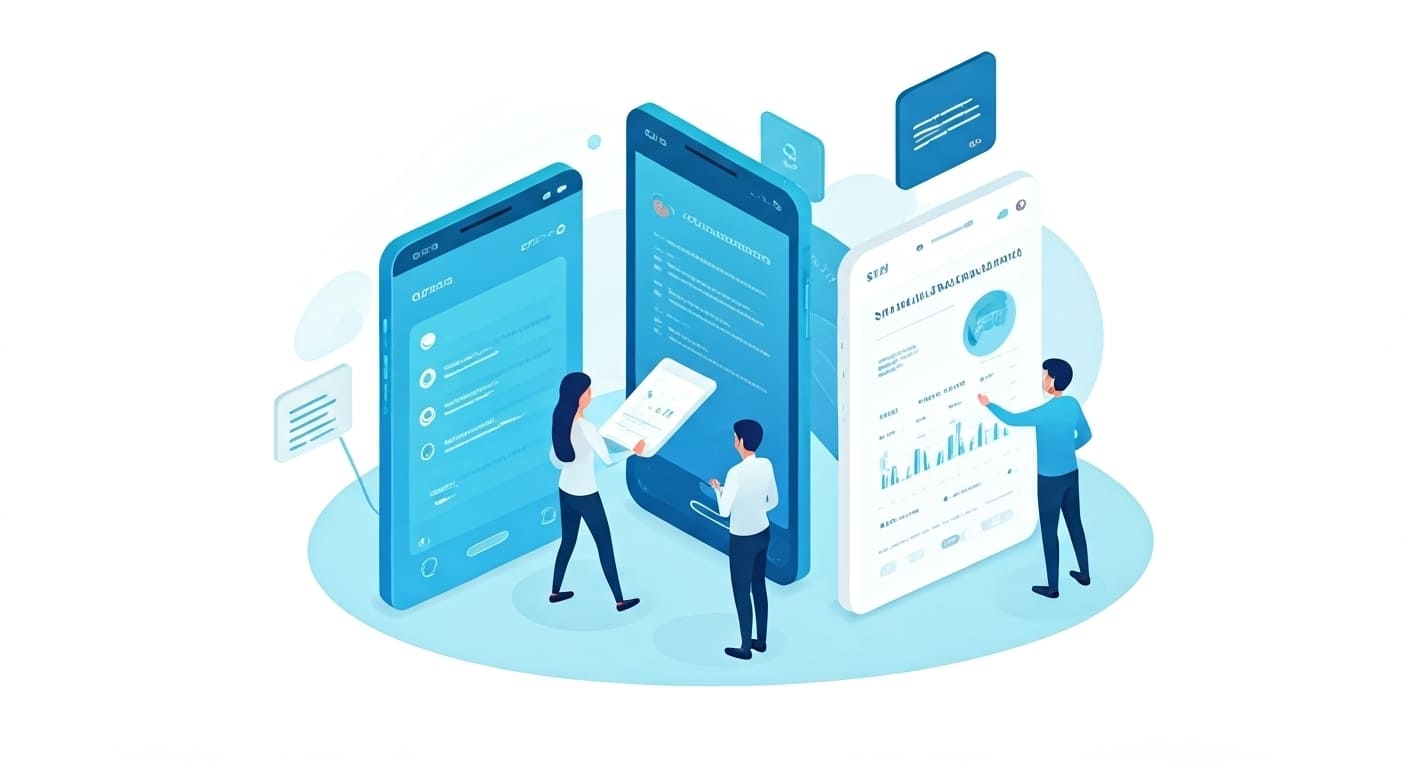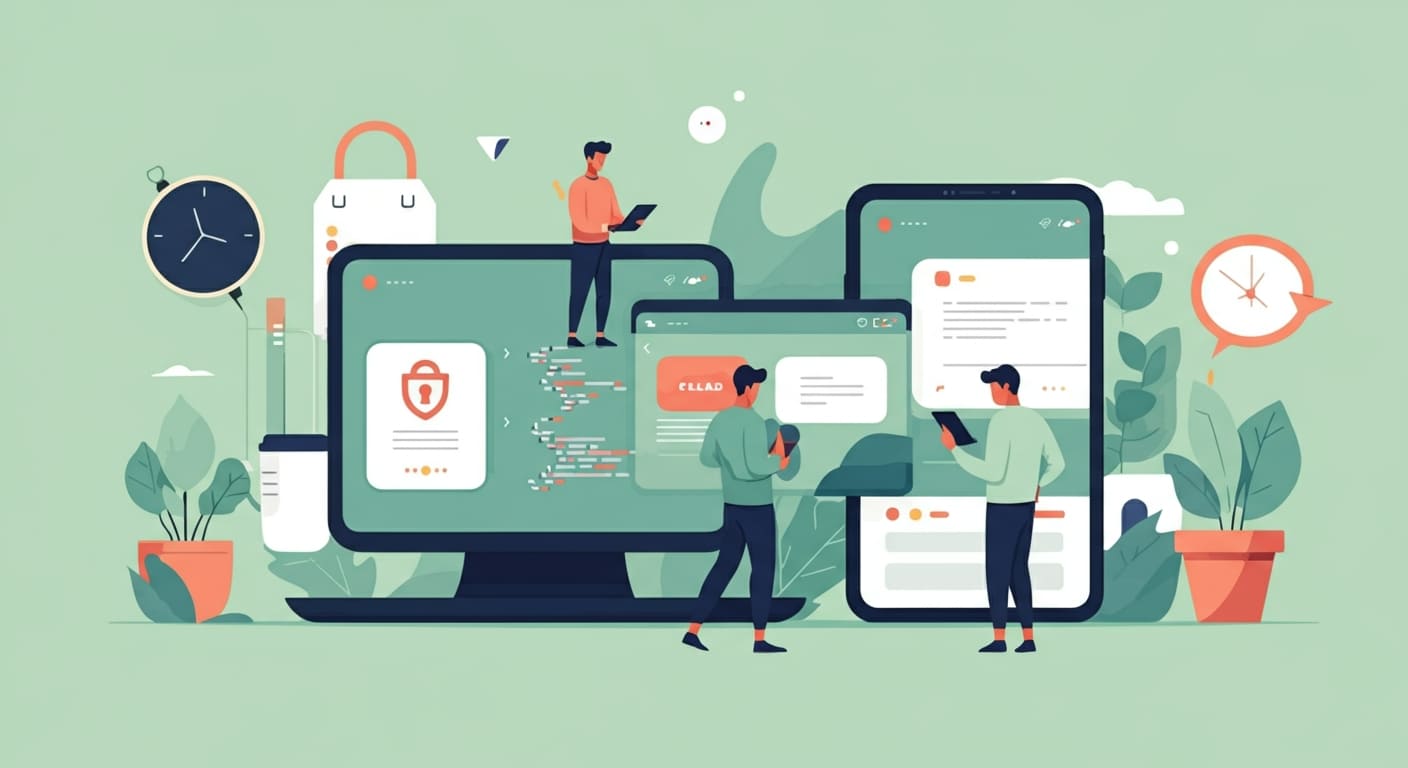Are you drowning in a sea of customer support tickets with no clear way to prioritize or route them? Imagine if you could automate the grunt work and focus on solving real problems. That’s where NLP support automation enters the scene. By leveraging natural language processing, businesses can automatically understand ticket sentiment and route issues faster than ever — saving time, cutting costs, and improving customer satisfaction. In this post, we’re diving into how NLP can transform your customer support tickets into a well-oiled machine.
Whether you’re a support manager, IT professional, or business leader, understanding how sentiment tagging and ticket routing enhance your workflows will empower you to deliver faster, more personalized customer experiences.
Understanding Sentiment Tagging in Customer Support
At the core of effective NLP support automation is sentiment tagging—a process that analyzes the emotional tone behind customer messages. Sentiment tagging uses machine learning models to classify text into categories like positive, neutral, or negative, revealing how customers feel about their experience or issue. This emotional insight becomes a powerful tool for support teams.
Why is Sentiment Tagging Crucial?
- Prioritization of Tickets: Customers expressing frustration or urgency need faster responses. Sentiment tagging helps automatically flag high-priority tickets that may require immediate attention.
- Better Resource Allocation: Support teams can focus specialized agents on handling unhappy customers, reducing escalations and churn.
- Enhanced Customer Satisfaction: Recognizing sentiment allows tailored responses that validate customer feelings, improving trust and loyalty.
- Fraud and Abuse Detection: Negative or aggressive sentiments can be flagged for proactive intervention.
Consider a telecom company receiving thousands of daily inquiries. Without sentiment tagging, urgent complaints can get lost in the queue. With automated sentiment detection integrated into your ticketing system, negative tickets are instantly flagged as critical, reducing average response time from hours to minutes.
How Sentiment Tagging Works in Support Systems
- Text preprocessing: Cleaning tickets for noise such as typos and slang.
- Feature extraction: Using word embeddings or specialized vectors that capture semantic meaning.
- Classification: Applying supervised machine learning models—like transformer-based architectures (e.g., BERT, RoBERTa)—fine-tuned on customer support data to predict sentiment.
- Tagging: Assigning sentiment labels integrated directly into the ticket for downstream processes.
Modern tools such as Azure Text Analytics and Google Cloud Natural Language offer out-of-the-box sentiment tagging APIs optimized for business domains in 2025, enabling rapid implementation without heavy development costs.
Enhancing Ticket Routing with NLP Support Automation
Once a ticket’s sentiment is understood, the next step is automated ticket routing — directing inquiries to the right team or agent without manual triage. Effective routing accelerates resolution and frees up human resources for higher-value work.
How NLP Improves Ticket Routing
Traditional routing relies on static rules based on ticket categories or keywords. But these rules often fail to capture complex or multi-faceted issues. NLP technologies analyze the full context of ticket content, including technical terms, customer intent, and sentiment, ensuring precise assignment.
- Intent Detection: NLP models classify what the customer wants (e.g., billing question, technical support, refund request).
- Entity Recognition: Key information such as product names, order numbers, or dates are extracted to provide necessary context.
- Sentiment Integration: Tickets flagged as negative may be routed to specialized escalation teams.
- Priority-based Queuing: Routing algorithms balance workload by combining intent, sentiment, and agent availability.
Benefits of Automated Ticket Routing
- Reduced Response Time: By eliminating manual sorting, tickets go straight to experts.
- Increased Resolution Quality: Agents receive comprehensive contextual data upfront.
- Load Balancing: Prevents agent overload and burnout by distributing tickets intelligently.
- Better Customer Experience: Speed and competence drive positive perceptions.
An e-commerce giant using an NLP-powered ticketing platform reduced their average callback time by 40%. This efficiency gain translated into a 15% increase in customer satisfaction scores within six months.
Practical Strategies for Implementing Routing Automation
- Integrate NLP-powered middleware with existing CRM or helpdesk systems.
- Continuously retrain intent and entity models with fresh support data.
- Combine sentiment tags with routing rules to form escalation paths.
- Use analytics dashboards to monitor ticket distribution and agent performance.
Leading platforms in 2025 like WildnetEdge offer turnkey NLP routing modules that seamlessly plug into your support ecosystem, empowering teams to scale effectively without compromising quality.
Key NLP Techniques Behind Support Automation
The backbone of NLP support automation consists of multiple natural language processing techniques that collaborate to automate tasks efficiently:
Entity Recognition
Entities are specific pieces of information extracted from text. In customer support, this includes product names, issue codes, dates, or locations. Named Entity Recognition (NER) models identify these automatically, enabling systems to:
- Auto-fill ticket forms
- Attach relevant knowledge base articles
- Route tickets by product or service line
Modern NER models leverage deep learning transformers trained on business-specific datasets, increasing detection accuracy even for niche vocabulary.
Sentiment Analysis
As covered earlier, sentiment analysis classifies customer emotions based on textual clues. Advances in 2025 bring models that understand nuanced expressions like sarcasm or mixed sentiment, improving the reliability of sentiment tagging significantly.
Intent Classification
Understanding the purpose behind a customer’s message is crucial. Intent classification categorizes tickets by asking what the customer is trying to achieve. Examples include support requests, feature inquiries, or cancellations. Accurate intent detection ensures tickets reach the right department and triggers appropriate workflows.
Additional Techniques
- Topic Modeling: Groups tickets by common themes for batch processing or insight generation.
- Text Summarization: Generates concise summaries, helping agents quickly grasp issue details.
- Language Detection: Supports multilingual automations by routing tickets in various languages.
Tools & Frameworks for NLP Support Automation
In 2025, several platforms and open-source resources have become standard in building NLP-powered support automations:
- SpaCy: Efficient for entity recognition and custom NLP pipelines.
- Hugging Face Transformers: State-of-the-art models (BERT, GPT variants) applicable to sentiment, intent, and summarization.
- Google Cloud Natural Language & Microsoft Azure Text Analytics: Fully managed APIs with deep domain support.
- WildnetEdge NLP Solutions: Specialized in integrating NLP automation into existing customer service platforms with minimal disruption.
Combining these technologies allows businesses to customize their NLP automation to the unique challenges of their industry and customer base.
Future Trends and Advanced Tactics in NLP Support Automation
The evolution of NLP support automation promises exciting innovations that will redefine customer service in 2025 and beyond.
Real-time Sentiment Tracking
Instead of tagging sentiment only upon ticket creation, advanced systems monitor ongoing conversations in real-time—be it chat or email—allowing agents to adapt tone and responses dynamically. This continuous feedback loop improves empathy and problem resolution speed.
Predictive Ticket Escalation
By analyzing historical ticket patterns and sentiment trajectories, AI models can predict which cases are likely to escalate or churn. Automated alerts enable proactive interventions before problems intensify, reducing costly escalations and negative reviews.
AI-Driven Chatbot Integration
Next-gen chatbots powered by NLP handle increasingly complex queries while seamlessly transferring difficult issues to human agents. These bots use sentiment and intent detection to personalize conversations, ensuring customer satisfaction even in automation.
Multimodal NLP
Emerging models will combine text, voice, and image data to extract richer context from customer support interactions—be it screenshots of errors or voice tone analysis. This holistic understanding will significantly improve accuracy in routing and sentiment assessment.
Continuous Learning Systems
Future-support automation platforms will incorporate feedback from human agents to refine their models over time, ensuring performance increases with minimal manual maintenance. This agility is essential for adapting to changing customer language and issues.
How to Prepare for These Trends
- Invest in platforms like WildnetEdge that prioritize modular, AI-first architectures.
- Partner with vendors offering ongoing model updates and customization.
- Train your support teams to work hand-in-hand with AI tools.
- Leverage analytics to track the impact of NLP automation on KPIs such as resolution time and customer satisfaction.
By embracing these pioneering tactics, companies can stay ahead in the competitive landscape of customer support automation.
Conclusion
NLP support automation is no longer a luxury—it’s essential for keeping up with modern customer expectations. By implementing sentiment tagging and smart ticket routing, businesses can drastically improve their support workflows, reducing response times and increasing customer satisfaction.
WildnetEdge stands as a trusted authority in delivering these advanced NLP solutions, empowering companies to automate and scale their support effortlessly. Their tailor-made tools integrate seamlessly with existing platforms to provide accurate sentiment analysis and intelligent routing tailored to your unique business needs.
Ready to elevate your customer service with NLP automation? Explore how WildnetEdge can help you get started today and transform your customer support into an efficient, customer-centric powerhouse.
FAQs
Q1: What is NLP support automation and how does it work?
NLP support automation uses natural language processing to analyze customer support tickets, enabling automatic sentiment tagging and directing tickets to the appropriate teams without manual intervention.
Q2: How does sentiment tagging improve customer support?
Sentiment tagging identifies the emotional tone of a ticket—whether it’s positive, neutral, or negative—allowing support teams to prioritize urgent or unhappy customers and respond more effectively.
Q3: What are the benefits of automated ticket routing with NLP?
Automated ticket routing ensures tickets are quickly and accurately sent to the right department or agent, reducing wait times and improving resolution rates.
Q4: Which industries can benefit most from NLP support automation?
Any industry with high customer support volumes—such as e-commerce, telecom, banking, and healthcare—can benefit by reducing response times and increasing customer satisfaction.
Q5: How does WildnetEdge support businesses in implementing NLP support automation?
WildnetEdge provides tailored NLP solutions including sentiment tagging and intelligent ticket routing tools that integrate seamlessly with existing support platforms to boost efficiency and service quality.

Nitin Agarwal is a veteran in custom software development. He is fascinated by how software can turn ideas into real-world solutions. With extensive experience designing scalable and efficient systems, he focuses on creating software that delivers tangible results. Nitin enjoys exploring emerging technologies, taking on challenging projects, and mentoring teams to bring ideas to life. He believes that good software is not just about code; it’s about understanding problems and creating value for users. For him, great software combines thoughtful design, clever engineering, and a clear understanding of the problems it’s meant to solve.
 sales@wildnetedge.com
sales@wildnetedge.com +1 (212) 901 8616
+1 (212) 901 8616 +1 (437) 225-7733
+1 (437) 225-7733






























